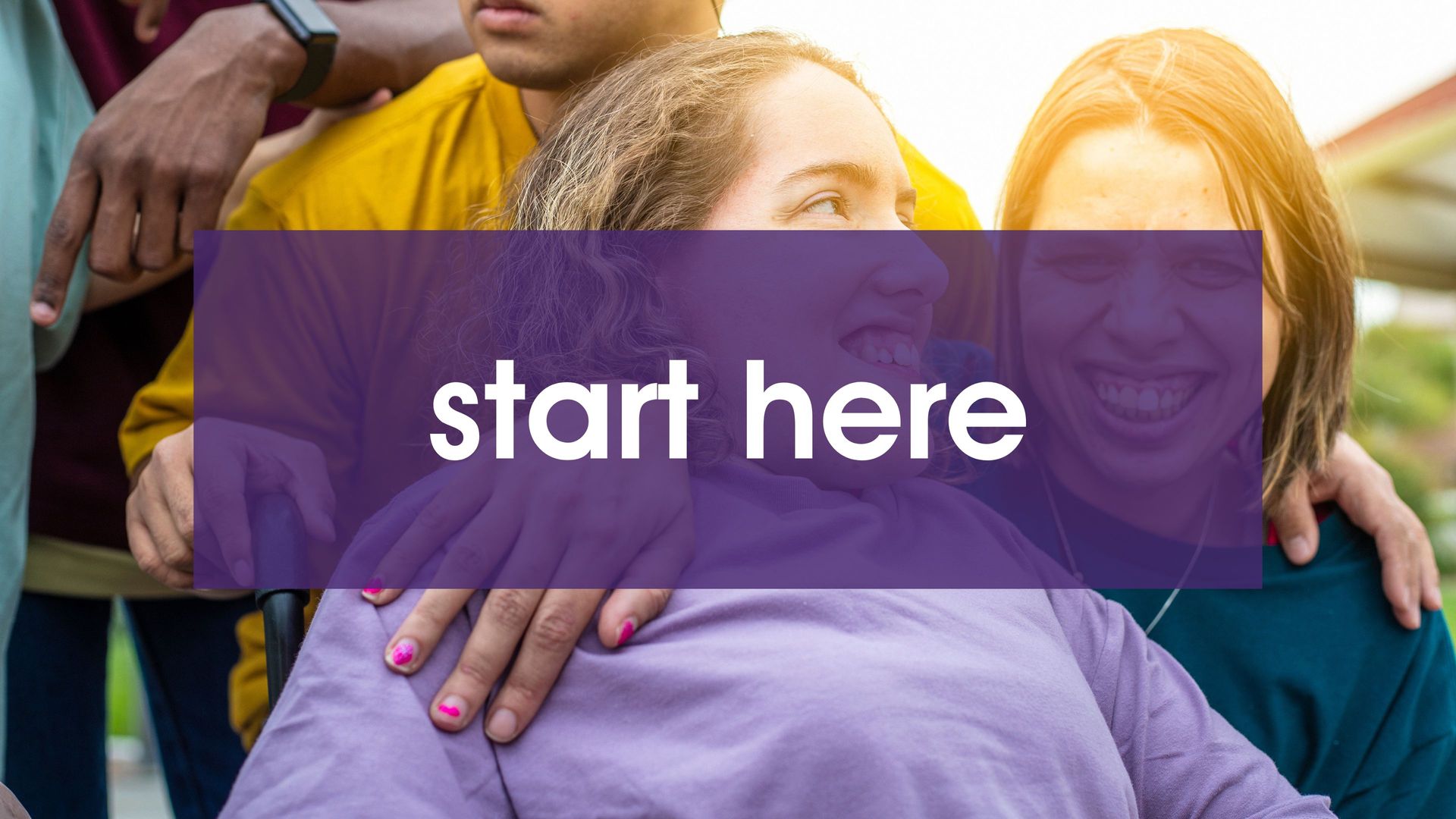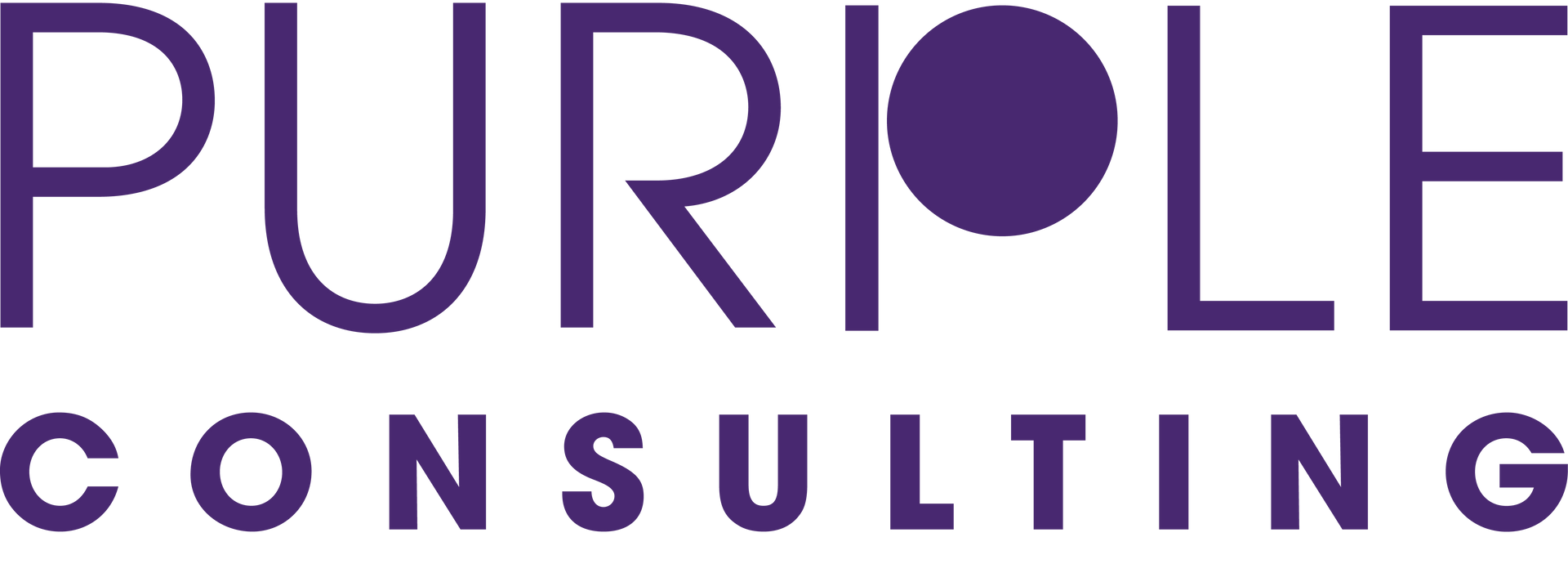
Eight Metrics to Measure the Success of Your Disability Inclusion Strategy
This article provides recommendations for measuring the impact of disability inclusion programs by focusing on measuring meaningful disability outcomes.
The article provides insight on:
- The difference between outcome and output measures, and how this difference can be applied to your disability inclusion strategy.
- Why disability outcomes are key to measuring the impact of your disability strategy.
- Eight examples of disability outcomes measures that can be applied to your disability inclusion plans.
At Purple Consulting, our approach to disability inclusion strategy and execution ensures you can answer two questions:
- 'Is this disability inclusion initiative working?'
and
- 'How do we know it's working?'
We do this by working with businesses to measure outcomes.
Measuring outcomes enables companies to measure the impact a disability inclusion initiative has on people with disabilities. In other words, it measures the data that matters.
McKinsey and Company estimate that in the USA alone, $10.6 billion is spent annually on Diversity, Equity, and Inclusion initiatives
[1]. That’s a huge spend; it makes sense to know if it’s having any impact.
At Purple Consulting, we distinguish between outcome measures, and output measures. Both have a place in measuring disability inclusion programmes and we explain the difference between the two below.
Note: The concept of using outcome measures should be applied across all DEI strategies, including but not limited to gender, race, ethnicity, LGBTQ+ strategies, as well as those with an intersectional lens. For the purpose of this article, we focus on disability.
How do outputs and outcomes differ?
Understanding the difference between output measures and outcomes is essential to effectively evaluate the impact of a disability inclusion program and ensure that it is truly benefiting disabled employees.
Output measures demonstrate what was delivered. When applying this to a disability inclusion programme, an example might be ‘We delivered 20 disability inclusion training workshops.’
Outcomes on the other hand, measure the impact of what is delivered. When applying this to disability inclusion programmes, we consider outcomes to be measures that show the impact the disability programme had on disabled employees. For example, what impact did the 20 workshops have on the extent to which disabled employees feel confident and psychologically safety to share their disability with their managers and colleagues?
Disability outcomes may be related to equitable employment and promotion, pay parity with non-disabled employees, the absence of discrimination at work, and access to workplace adjustments. It’s the stuff that matters to disabled employees.
Example of outcomes vs. outputs:
Expanding on the workshop example, let’s imagine the workshop is aimed at all managers in a company and the topic is How to be an inclusive leader for people with disabilities.
On completion of the workshop, 80% of all managers globally attended and feedback shows 90% of managers now feel confident to be a disability inclusive leader.
These measures are the outputs - what was delivered. In this scenario, you have excellent outputs which should be celebrated. However, you don’t yet know whether the workshops had any impact on equity and inclusion outcomes:
- Did the workshops ultimately result in more employees receiving the appropriate accommodations?
- How many managers advocated for disability needs at their level and above following the workshops?
Why are disability inclusion outcomes important?
By measuring disability outcomes, you not only determine the effectiveness of your DEI strategy, but also promote strategic alignment in executing disability initiatives. If everyone in your company knows what you want to achieve, it gives a sense of collective purpose and vision behind all initiatives. This way you minimize time wasted on initiatives that don’t align and won’t have any long-term impact.
Clear outcome measures also enable a process of iteration - so you can assess whether or not you have achieved the outcome and adjust future disability strategy efforts accordingly.
Eight examples of disability outcomes.
Outcomes should be specific, measurable, and targeted to the biggest opportunities for driving disability equity and inclusion in your company. Here are the top outcomes to consider measuring:
1. Employee engagement and feelings of trust:
- To what extent do your disabled employees feel valued, respected and listened to?
- To what extent do your disabled employees feel a sense of belonging: a feeling that ‘I matter’?
- To what extent do your disabled employees feel safe to share their disability with their manager and colleagues?
- To what extent do disabled employees feel set up for success?
- How does the above compare to your non-disabled employees?
2. Promotion rates:
- Are disabled employee promotion rates comparable to non-disabled employees?
- Where are there disparities?
3. Retention rates:
- Are you retaining your disabled employees?
- How does this compare to non-disabled employees?
- Do exit interviews ask any DEI specific questions to assess any retention issues?
4. Pay equity:
- Are your disabled employees paid equally to your non-disabled employees?
- How does it compare when you apply an intersectional lens? See comment below on intersectionality.
5. Physical and digital access:
- Can your disabled employees access their physical workspaces with the same ease as non-disabled employees?
- Can your disabled employees access all digital content in the same timely manner as non-disabled employees? For example, are captions used on all live videos for deaf or hard-of-hearing employees, or do they have to wait until after the live video, for the transcript?
6. Accommodations:
- Do your disabled employees have the accommodations they need to thrive and deliver their best work?
- Are people with invisible disabilities, such as chronic conditions, mental health conditions and neurodiversity receiving their accommodations at the same speed as those with visible disabilities?
7. Workplace discrimination cases:
- Do disabled employees feel safe to disclose incidents of bias and discrimination?
- Are disabled employees aware of the policies in place to protect them from discrimination or harassment?
8. Diversity of workforce: disabled employee representation.
- What % of employees, including senior leaders, are disabled?
A comment of caution on seeking to only achieve a workforce diversity target. This outcome is purposefully listed last. A workforce diversity target, such as ‘we aim to achieve 20% of our employees identifying as having a disability by 2026’ doesn’t tell you whether you have tackled systemic equity and inclusion challenges for people with disabilities.
Programmes focused solely on achieving diversity targets are likely to be insufficient in addressing systemic equity and inclusion challenges faced by people with disabilities, as outlined in points 1 to 7 above, which are necessary for disabled employees to thrive in the workplace. You can do more damage long term by increasing representation without addressing workplace barriers and systemic inequity.
Bringing an Intersectional DEI lens
For each of these outcomes, reviewing the data from an intersectional lens would give you a fuller and more complete picture of inequity. For example, how do pay, promotion and retention rates compare between black female disabled employees and white male disabled employees?
Conclusion
In conclusion, choosing disability outcomes prior to initiating a disability strategy not only ensures you make meaningful systemic change for your disabled employees, but also ensures you can efficiently measure progress and invest your DEI budgets efficiently. There are a number of disability outcomes to choose from - your disability focus areas should be prioritised based on the biggest needs identified in your company, as identified through audit data and feedback from your disabled employees.
To hear more about how we work and how we can help you develop disability outcomes as specific for your company, get in touch here.
With thanks to Andrew Geehan of Trident Training for comment and insight regarding workplace discrimination.
[1] Diversity and Inclusion (D&I) - Market Study by Global Industry Analysts, Inc. (strategyr.com)
New Paragraph


All Rights Reserved | Purple Consulting

